commentary Commentary
Commentary: Why recycling, less single-use plastics are not the answers to our plastic scourge
Getting rid of straws and other single-use plastics, recycling and reducing our consumerism are noble efforts but a fundamental redesign of our global value chains is needed to tackle plastic waste, says the University of Denver’s Jack Buffington.
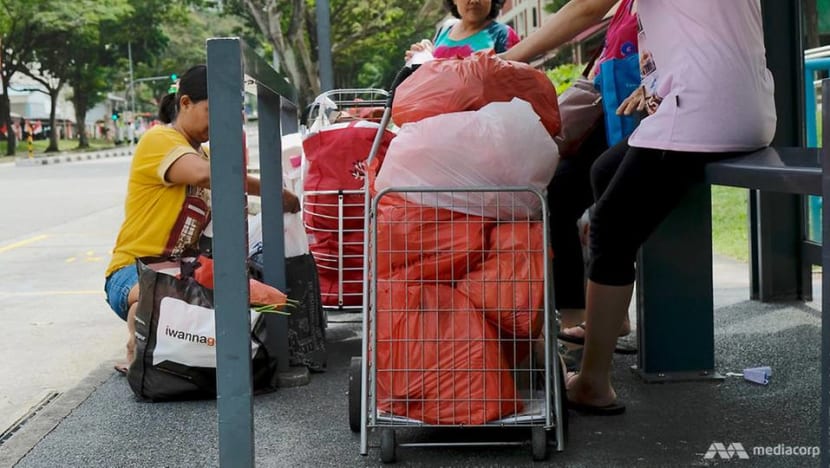
Several women wait at a bus stop with trolleys full of single-use plastic bags. (File photo: TODAY/Chng Shao Kai)
DENVER, Colorado: Plastic is everywhere, even in the most remote places on earth such as the deepest depths of the Pacific Ocean in the Mariana Trench, to the highest peak of Mount Everest.
But no place has been as negatively impacted by plastic waste as the fastest growing nations of Asia, where the United Nations has hailed the growing situation over plastic waste a “planetary crisis”.
A WORLD OF PLASTIC
Peak Plastic describes the point in time when the benefit of the next piece of plastic provides is outweighed by its irreversible damage to the environment, a timeline that will happen in the next eleven years.
Peak Plastic will occur in some places much sooner according to some studies, in the developing communities of China, Indonesia and Philippines where the production of plastic waste are already at a crisis level.
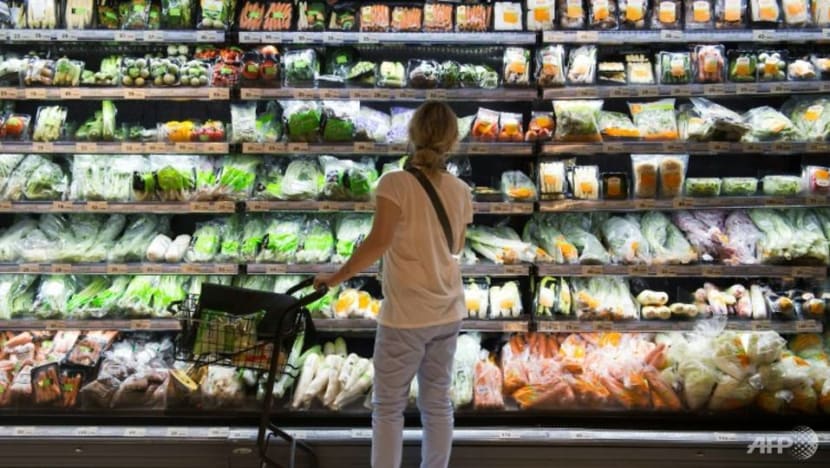
Worldwide, plastic production and use is growing at a 10 per cent rate, but in the developing regions of Asia, it is growing much faster than the existing waste management infrastructure can handle, leading to a large majority of the 9 million tonnes a year of plastic that is dumped into our oceans every year.
READ: The world’s plastic problem is bigger than the ocean, a commentary
By 2050, it is possible that there will be more plastic in our oceans than fish, a scenario that seems almost impossible to believe given 71 per cent of the earth is covered by oceans.
TACKLING THE PLASTIC SCOURGE
What can be done to address this global problem before it is too late? Is the answer for individuals to recycle more or to consume less, producers to develop sustainable materials, or even for innovators to step forward with the latest technologies?
Two weeks ago, Singapore food delivery service Revolv announced that they aimed to replace single-use plastic in take-aways with reusable cups and containers that customers can rent for free. They join a plethora of big global brands like Starbucks, Coca-Cola, and KFC in reducing their plastic footprint.
All these options are a part of the overall solution but are not the crux of the real problem which stems from the 21st century’s super-efficient supply chain system has seamlessly designed, sourced, manufactured and distributed materials and goods to consumers on such a large scale and low cost in virtually every nation of the world.
Paradoxically, it is both a supply chain system built on waste and convenience, but born out of necessity when it has provided needed infrastructure for some of our most basic needs such as food, water, and healthcare.
Solutions that may appear logical on the surface, such as reducing usage, eliminating single-use plastic, and developing new product alternatives can lead to an even worse impact to the environment if the same supply chain system stays intact.
READ: Our reluctance to part with plastic bag stems from a 'yeah-but' mentality, a commentary
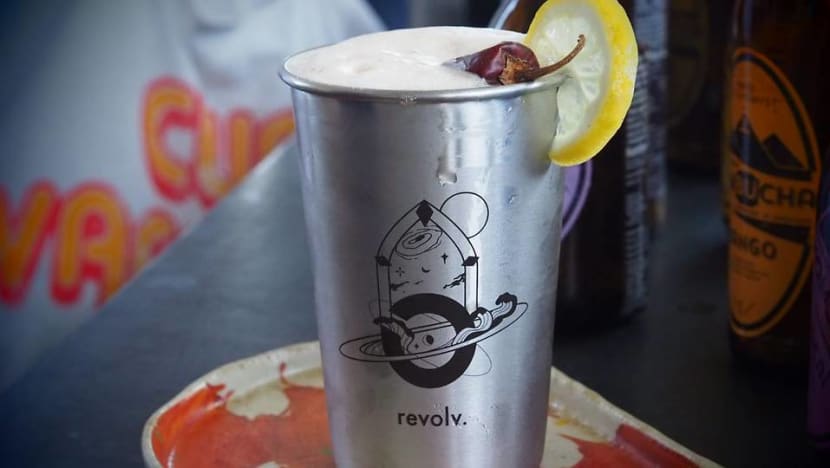
Take for example the important role of plastic in the developing world as millions are being lifted away from poverty and elevated into the middle class. Middle class consumerism generates waste, but this is also a function of the improved health, sanitation and population control.
The efforts by large consumer product companies, such as Nestle, Starbucks, Coca Cola, and Pepsi to become more sustainable in their products is almost always well intended, but these campaigns without transformational changes to how their supply chains operate just leads to more publicity than results.
Grand plans driven by advances in technology, such as The Ocean Clean Up Project, can be lionised as the ultimate solution and raise tens of millions of funding dollars only to fail miserably in trying to achieve too ambitious a purpose.
Recycling programmes, industry sustainability campaigns and high-technology innovations have failed to accomplish much more than incremental improvements all at the same time the global plastic production is rising at nearly a 9 per cent rate per annum, and most of the 380 million metric tonnes produced is wasted, including 9 million tonnes spilled into the oceans every year.
A NEW MODEL OF PLASTIC PRODUCTION
Fundamentally, the world needs a new model for plastic that serves the purposes of good without the harmful impact to the environment and human health. We need a new supply chain system of plastic that makes it both a material of economic growth and environmental sustainability rather than a choice of one over the other.
READ: Dear Singapore, a plastic future is not fantastic, a commentary
For this to occur, the first step is for plastic to be designed to be recycled in the first place. Today’s plastic was never designed to be recycled, and as a result, our best efforts can only achieve a 10 to 20 per cent recycling rate rather than materials in nature where an output from one natural process becomes a feedstock to another.
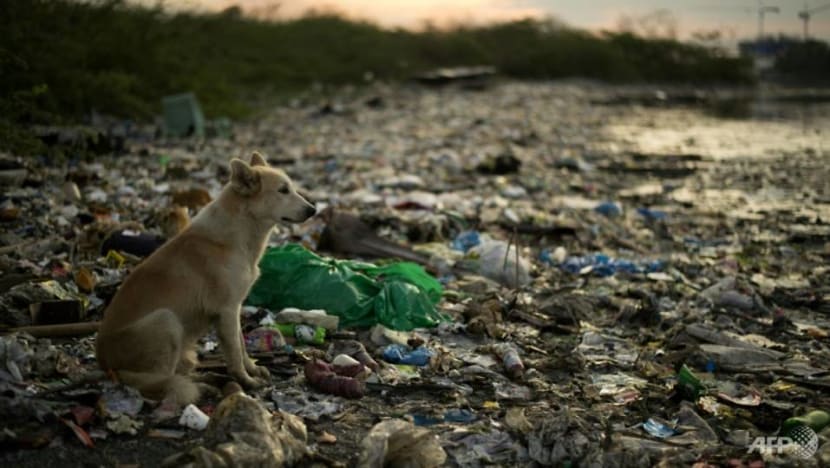
Today, there exists technology to recycle plastic for reuse through changes in how its feedstocks are sourced and manufactured in a closed loop system.
The challenge is to create this type of closed loop system as exists in nature to the same complexity and scale as our industrial systems today. This should be the focus in creating a design and polymerisation process for plastic that operates like nature, but at the super-efficiency and scale of today’s industrial systems.
Innovations in chemistry and material science are leading to changes in what we consider to be plastic, how we use and reuse it. Many technical breakthroughs exist today, or are on the cusp of being discovered.
In January 2019, a non-profit organisation called Alliance to End Plastic Waste was formed through a US$1.5 billion commitment over five years of more than 25 global organisations, including the largest plastic producers like Procter & Gamble, ExxonMobil and Veolia, to innovate through this challenge. This is the most prominent response from the major manufacturers to work together to solve the problems of plastic while enabling its growth to continue.
SCALE UP ENTREPRENEURIAL EFFORT
Innovation and funding should not fixate on how to collect plastic in the ocean after it has slimed its way thousands of miles to its collection points, but double down on how to create a supply chain system that enables communities to design, source, produce, use and reuse these molecules in a manner as exists today in nature where the waste of one local product becomes the input of another.
Entrepreneurial waste pickers are moving in this direction, albeit in a low technology manner.
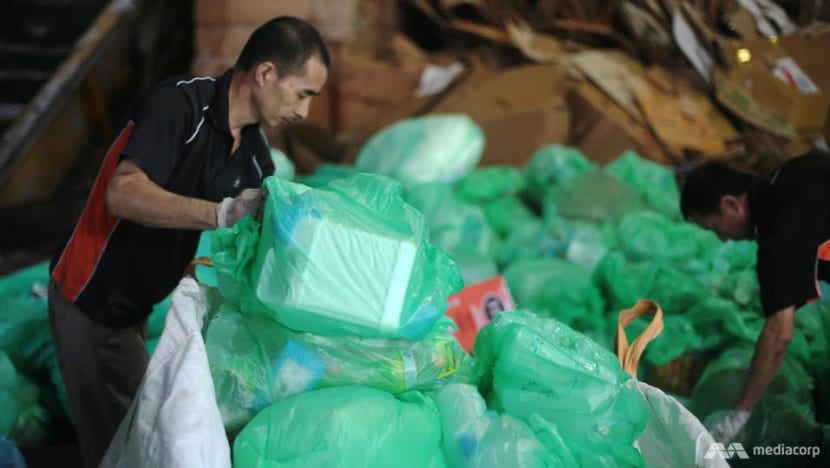
READ: What will it take for Singapore to give up plastic? A commentary
For example, the Mother Earth Foundation in the Philippines works with local communities to re-purpose nearly 80 per cent of plastic waste, as do the Jabbaleens in Egypt. My research goal is to connect these innovators from the developing world with best practices in supply chain management, and the cutting-edge technologies that can succeed within one innovative solution.
Our massive, global supply chain systems create products in one location to be mass distributed across the planet, leaving plastic waste as logistically of no value at its end of life.
In contrast, these community-based, or localised supply chain systems value plastic materials at the source where production and consumption both exist, which drives both economic growth and environmental sustainability.
What if industrial companies created formalised community-based supply chain systems that includes the proper technologies and investment to replace their existing long distance globalised systems into these informal, highly entrepreneurial waste picking enterprises?
The economics and science for this model can succeed, and we have calculated the business cases to provide it, fostered by a new approach to material design and polymerisation, de-polymerisation, and re-polymerisation is a transformative approach to this plastic problem in both developing and developed markets.
It may seem like a tall order, but this scalable approach can succeed within local communities that aligns their entrepreneurs with supply chain best practices and cutting edge technologies. We just need to move forward in putting them in place.
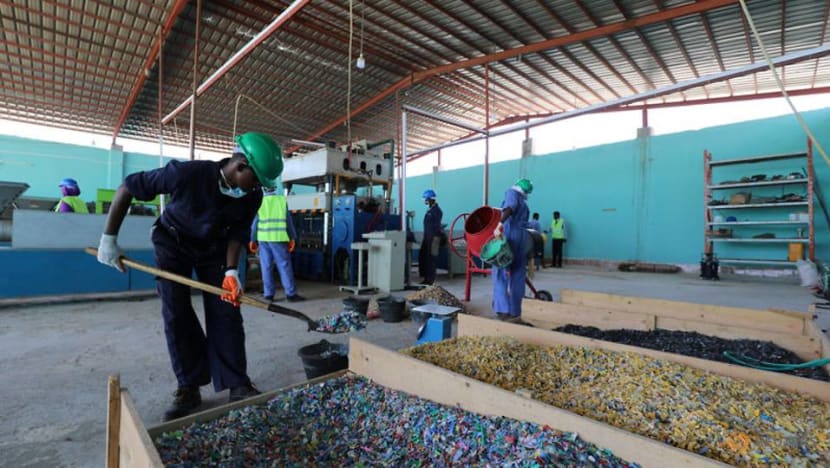
READ: A made-in-Singapore solution to the world's plastic waste problem
A 21ST CENTURY SYSTEM
Don’t get me wrong. Recycling programmes, reductions in consumption, industry sustainability campaigns and technology from innovators can be useful options in countries’ toolboxes in incrementally addressing issues, but they will not be able to fix the root causes of our plastic problem.
The paradox is that plastic is too valuable to eliminate yet too harmful to continue in its current state, so a new model of its supply chain system must become the focus area for any other solutions to be successful.
This 21st century system must redesign its materials to be synthetic in use but break down as materials do in nature, and the supply chain to value inputs and outputs in a synergistic flow within a localised system.
The first step is to create these systems in smaller scale innovative business grant funding and incentives across the world until they can be scaled into global networks, the same process that happened in the development of today’s supply chain system.
Even a few decades ago, nobody would have believed that it would be possible to efficiently manufacture a smartphone device across more than 20 or so nations, but this is today’s reality.
So why shouldn’t we believe that through changing how our supply chain systems work that industry and nature can enable our societies to grow in wealth and prosperity?
Jack Buffington is a professor at the University of Denver and expert in supply chains and material science.














